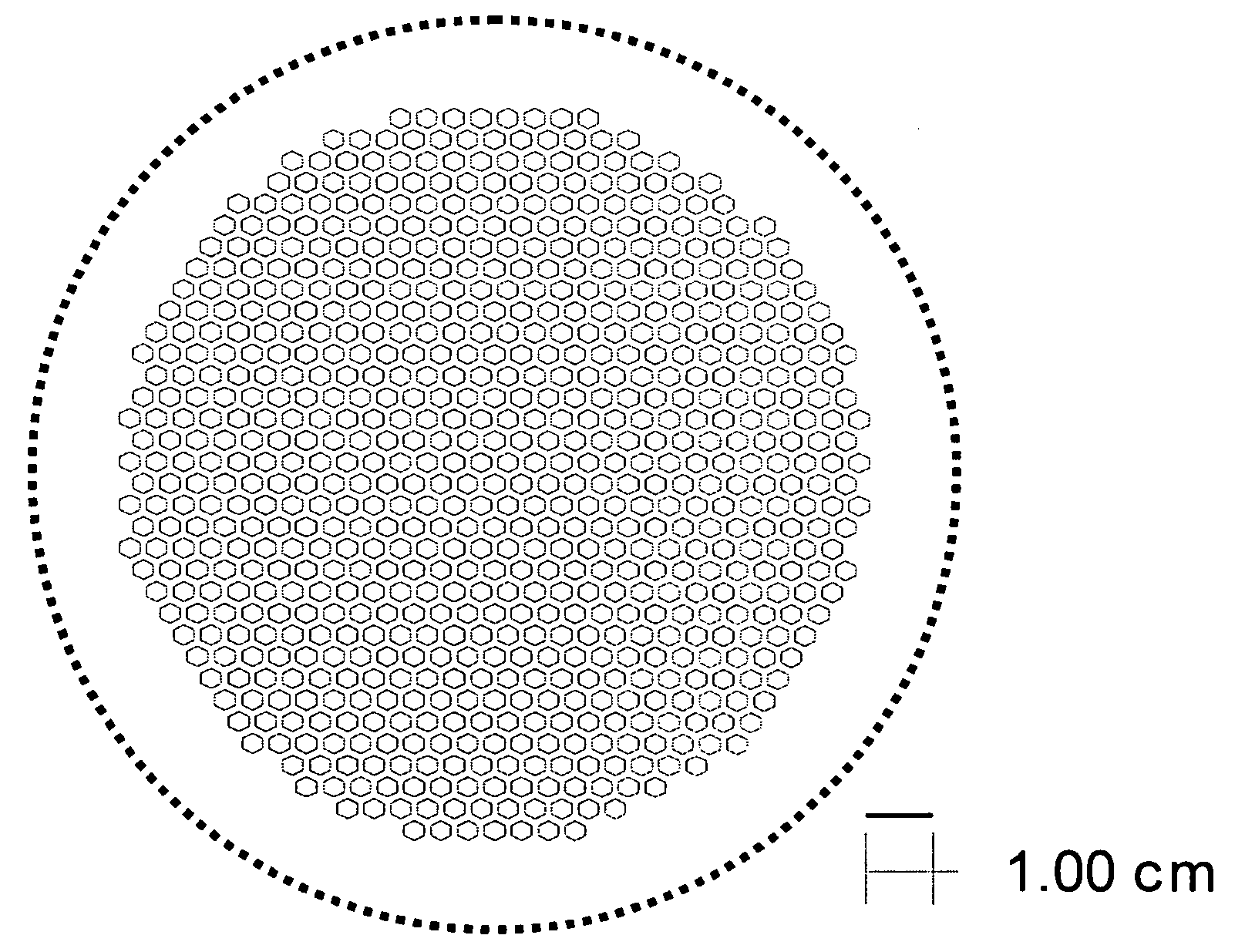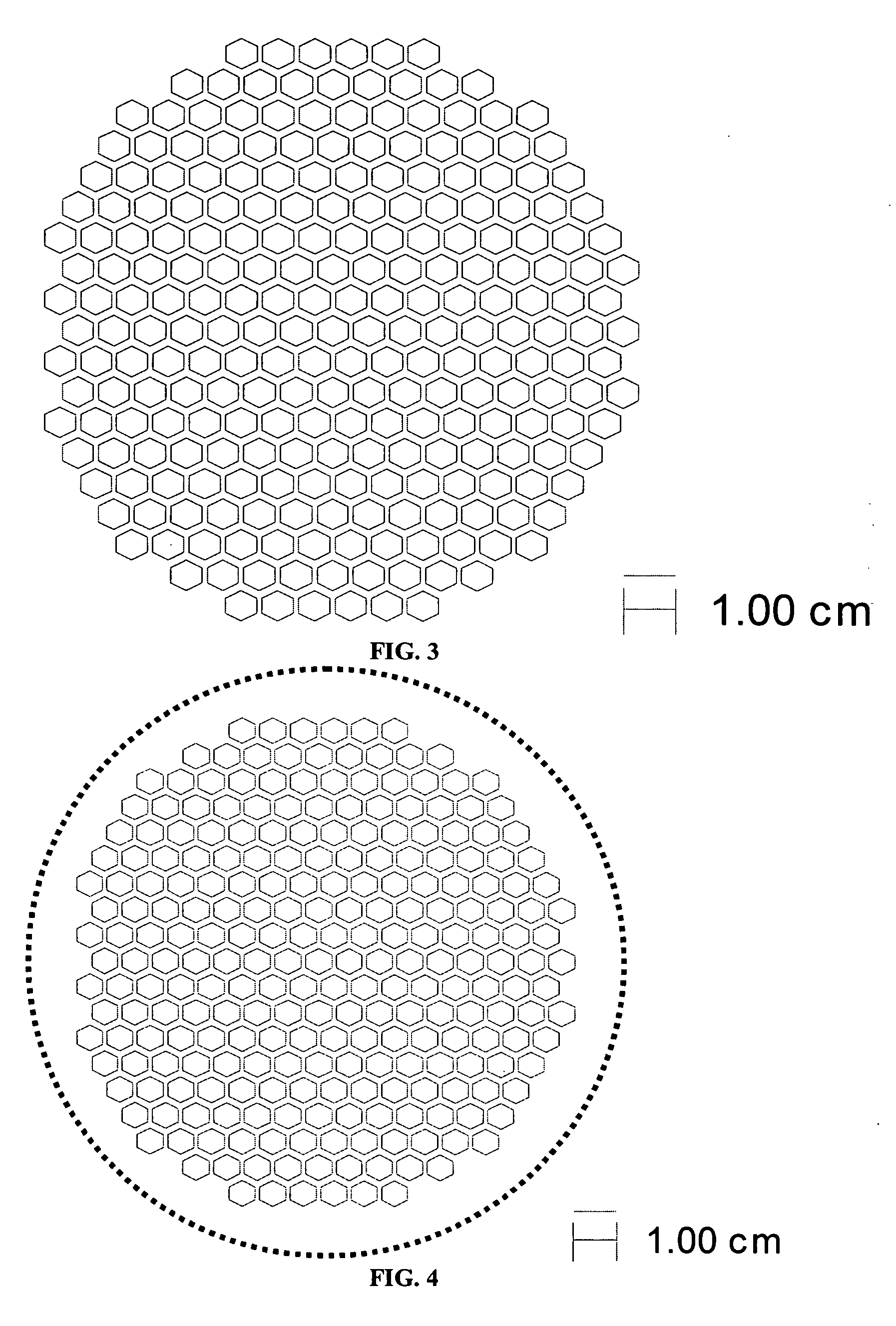Self-supporting ceramic membranes and electrochemical cells and cell stacks including the same
a ceramic membrane and self-supporting technology, applied in the field of self-supporting ceramic membranes and electrochemical cells, can solve the problems of difficult scaling to large power stacks, low volumetric or gravimetric power density of conventional tubular cells, and difficulty in processing of cathode-supported cells, etc., to achieve low ohmic contribution of electrolyte layer, high mechanical strength, and low cost
- Summary
- Abstract
- Description
- Claims
- Application Information
AI Technical Summary
Benefits of technology
Problems solved by technology
Method used
Image
Examples
example 1
Preparation of Cell Architecture I
[0063] The bi-layers were constructed with cast tapes prepared with 6 mol % scandium stabilized zirconia powder (initial SSA=8.704 m2 / g). The 6ScSZ tapes for the support structure were prepared by conventional two-step tape casting method. In the first step, the powder (61.27 wt % based on total slurry weight) was milled in a solvent system (1:1 ratio of xylene and ethanol) with 1 wt % dispersant (Richard E. Mistler, Inc., DZ3) for 4 hours. In the second step, the binder and plasticizers were added in following weight percents based on 6ScSZ powder content: 3.18 wt % poly(butylbenzyl phthalate) (Richard E. Mistler, Inc., PBBP), 3.18 wt % poly(alkylene glycol) (Richard E. Mistler, Inc., PPAG), and 6.45 wt % poly(vinyl butyral) (Richard E. Mistler, Inc., B-98). The bottle was resealed and placed on the mill for 12 hours. The milled slurry was then de-aired prior to casting. The slurry was cast onto Mylar with doctor blade height set at 300 μm. The th...
example 2
Preparation of Cell Architecture II
[0066] The support and electrolyte bi-layers were prepared, cast, and laminated as described in Example 1. The support laminate was laser cut to produce the pattern shown in FIG. 3. The cut-out laminate was set aside. The electrolyte stack was prepared and the two-sheet stack of electrolyte tape was laminated with the cut-out support, also as described in Example 1. The final part was cut out of the resulting laminate using the pattern shown by the solid line in FIG. 4.
example 3
Preparation of Cell Architecture III
[0067] The support and electrolyte bi-layers were prepared, cast and laminated as described in Example 1. The support laminate was laser cut to produce the pattern shown in FIG. 5. The cut-out laminate was set aside. The electrolyte stack was prepared and the two-sheet stack of electrolyte tape was laminated with the cut-out support, also as described in Example 1. The final part was cut out of the laminate using the pattern shown by the solid line in FIG. 6.
PUM
 Login to View More
Login to View More Abstract
Description
Claims
Application Information
 Login to View More
Login to View More - R&D
- Intellectual Property
- Life Sciences
- Materials
- Tech Scout
- Unparalleled Data Quality
- Higher Quality Content
- 60% Fewer Hallucinations
Browse by: Latest US Patents, China's latest patents, Technical Efficacy Thesaurus, Application Domain, Technology Topic, Popular Technical Reports.
© 2025 PatSnap. All rights reserved.Legal|Privacy policy|Modern Slavery Act Transparency Statement|Sitemap|About US| Contact US: help@patsnap.com



